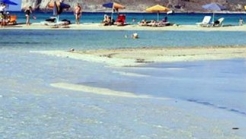

Greece
The Alexandroupoli Ecclesiastical Museum houses the collection of ecclesiastic objects that were collected from the churches and monasteries of the Alexandroupoli Metropolis.
The Alexandroupoli Ecclesiastical Museum houses the collection of ecclesiastic objects that were collected from the churches and monasteries of the Alexandroupoli Metropolis. The exhibits date back to the 15th, 16th 17th century.
The Alexandroupoli Ecclesiastical Museum is housed in the Leontarideios school, next to the Metropolis. The collection also contains threefolds, single pages of threefolds, a wooden temple cross, two crucifixes of litany, a picture depicting the Epitaph Weep, two mourning figures and a two fold wood engraved pray text.
Concerning the theme of the museum, the pictures cover the entire span of thr orthodox dogmatic hierarchy. There is a great variety of standardized depictions of Christ, Mary and many saints, who correspond to the Church’s diary of Saints and name days, nut also to the need for leturgic use and adoration. Of special interest are the inscriptions with the names of the painters, dedicators and offerers.


Chrissi, or Gaidouronisi, is an island in the Libyan sea, It is one of the many islands surrounding Crete. located south of Ierapetra.Chrissi is surrounded by many beaches with golden sand, after which its modern name was given.


It is one of the last natural paradises of Crete. The visitors usually reach it via Kastelli in Kissamos, as part of a boat tour, passing first through the island of Gramvoussa.


The Archaeological Museum St. Nicholas was founded in 1970 with a view to report findings from Eastern Crete.
1039 Ε 6061 01515 00